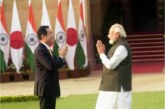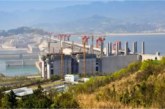Water is preeminently acknowledged as the driving force of all nature. Apart from meeting the water and sanitation requirements of the world’s 6 billion people, the water sector is also responsible for providing 40 per cent of the world’s food requirements, through irrigation, which also accounts for approximately 70 per cent of all worldwide freshwater withdrawals and for generating about 17 per cent of the world’s electricity. Furthermore, water provides livelihoods for innumerable numbers of species. It is also a crucial factor in the global climate systems.
Keeping in view such immense significance of water in human affairs, there is a dire of having effective management of the water sector for the vitality of human welfare and environmental sustainability. It is a large sector having capital investments worldwide in excess of US$ 500 billion per year, as well as complex one, with many actors in the public sector, the private sector, civil society and the community of donors/financiers. and overall poorly performing.
According to Indian branch of the Transparency International, the overall performance of the water sector has been poor, at the global level in general and India in particular. According to broad estimates, there are over 1 billion people without regular access to clean water and a further 2.6 billion without access to regular sanitation. Water scarcity already affects local regions on every continent, and by 2025 more than 3 billion people could be living in water-stressed countries.
Water experts agree that the water sector is afflicted with the malaise of poor governance, at the core of which is corruption. Corruption is ubiquitous and pervades all aspects of the water sector, from water resources management to drinking water services, irrigation and hydropower. The resultant impact is discernible in polluted drinking water, altered water flows and flooding patterns, reduced crop yields and inadequate infrastructure —all problems that worsen the already precarious lives and livelihoods of the poor.
Global Dimensions
The recently released Global Corruption Report 2008 by Transparency International, inter alia, mentions that corruption in the water sector puts the lives and livelihoods of billions of people at risk. The report, first of its kind to document the extent of corruption in the water sector throughout the globe, notes that with climate change making water scarcity a growing concern in many poor parts of the world, and the cost of corruption in the water industry raising the price for water services 10-30 percent worldwide each year, the need for reform is clear.
It further cautions that without increased advocacy to stop corruption in water, there will be high costs to economic and human development, the destruction of vital ecosystems, and the fuelling of social tension or even conflict over this essential resource.
Corruption in the water sector has acquired many manifestations, of which large-scale hydropower projects have become the breeding ground of corruption. According the report, few other infrastructure projects have a comparable impact on the environment and people. The hydropower sector’s massive investment volumes (estimated at US$50–60 billion annually over the coming decades) and highly complex, customized engineering projects can be a breeding ground for corruption in the design, tendering and execution of large-scale dam projects around the world.
However, the impact of corruption is not confined to inflated project costs alone. Large resettlement funds and compensation programmes that accompany dam projects have been found to be very vulnerable to corruption, adding to the corruption risks in the sector.
While describing how corrupt large dams are crowding out investments in better alternatives, the Report states:” In nature, water always flows downstream. In the geography of power relations, clean water tends to flow to the rich and powerful, while waste water tends to flow to the poor. An important reason for this anomaly is corruption, which has contributed to a political economy that favors large, capital-intensive projects over small-scale approaches.”
India’s Case
India’s poor depend on government-subsidized schemes for drinking water—that most basic of human necessities—but their access to this may often be a function of their ability to pay bribes. Drinking water is a responsibility of the state governments according to the country’s Constitution. A Transparency International India-Centre for Media Studies survey of 22,728 households in the so-called below the poverty line, or BPL, category estimates that 9 per cent of the 7.5 million BPL households had to pay a bribe to ensure access to water in 2007. The experience of the urban poor was different from their rural counterparts, partly because the rural populace often has access to community sources of water such as ponds and wells.
Undoubtedly, the UPA Government, in its budget for 2007-2008 announced that on each day of the year, 290 inhabitants were provided with drinking water and this statement was designed to showcase the ‘impressive progress’ made under the UPA’s flagship Rajiv Gandhi Drinking Water Mission (RGDWM) meant to provide ‘safe and sustainable drinking water sources’ to villages.
What the Government glossed over was the official reality check — Rs 427.47 crore had been diverted in 16 states, said a performance audit conducted by the Comptroller and Auditor General of a quarter of the districts in 26 states. This inter alia included: lakhs of rupees spent in West Bengal laying pipes in an area where there was no sustainable water source; Rs 2.35 crore spent in uninhabited or non-existent villages in Arunachal Pradesh; crores down the drain in Madhya Pradesh because tube-wells were sunk at the behest of ‘influential’ politicians and not the villagers’ needs; pipes procured in Meghalaya on forged certificates.
Given that the money earmarked for this for 2008 was over Rs 7000 crore, the CAG’s audit called for ‘immediate and swift action’ to plug the holes. The audit, just like the one of the National Rural Employment Guarantee Scheme, found that the water mission, via the Accelerated Rural Water Supply Programme, is fraught with diversion of funds, corruption and waste.
The draft report observed that there were numerous deficiencies in execution and implementation of works, including time and cost-overrun, non-completion of works, non-functional and defunct works, and expenditure on irregular and unapproved items. It further added that there were several instances of ‘fictitious expenditure’, ‘suspect expenditure’, ‘inflated Estimates’, ‘irregular execution’ and ‘misutilisation of funds.’
The draft report was based on CAG’s audit findings based on investigation of implementation of projects undertaken during 2002-03 to 2006-07. The draft report further stated that in many places where water was being supplied, quality was rarely monitored. Despite clear guidelines, states had failed to establish district and state-level labs and neither had they put in place trained staff.
The draft report also envisaged that in Madhya Pradesh Rs 3.85 crore was spent on 705 tube wells in fully covered habitations at the instance of influential persons. Similar observation is reported about Maharashtra where Rs 13 crore was released in Amravati district in contravention of stipulated rules.
These instances of corruption in water sector in India are just a tip of the iceberg and there is an urgent need to probe all aspects of corruption in the water sector, both at the Centre, State and even village levels. There is also urgency for streamlining the governance of water system and rectifying the lacunae brought forward by different agencies in the distribution of water and other related aspects.
Undoubtedly, the government agencies entrusted with the task of water related issues are doing their work, the involvement of NGOs should also be encouraged to liaise with the nodal agencies to facilitate speedy implementation of the schemes of the Central Government with the coordination of the State governments and district agencies. The anti-corruption drives should be accorded priority and the guilty should be brought to book through speedy trials.
The extensive recommendations made by the Global Corruption Report 2008 should also be taken into consideration. The Report observes that key to change is transparency and participation for water governance. The Report envisages: “Participation by marginalized groups in water budgeting and policy development can provide a means for adding a pro-poor focus to spending. Community involvement in selecting the site of rural wells and managing irrigation systems helps to make certain that small landholders are not last in line when it comes to accessing water. Civil society participation in auditing, water pollution mapping and performance monitoring of water utilities creates important additional checks and balances.”
Source: Third Concept/December 2008/Vol. 22/No. 262/P.no. 11/


